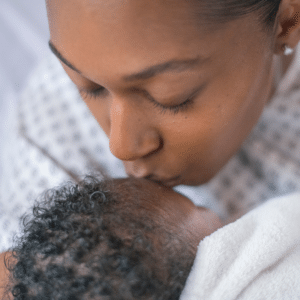What if you were told:
It is not how you give birth that matters most. It is how you feel about your experience that has a lasting impact. In other words, it is not the method of delivery but rather, the perception of the birth experience.
What if the broad message was less about how to prepare for a non-interventive birth for the ‘best’ outcome. It more about how to ensure that you feel physically and psychologically safe.
That you can….
- have control
- consent to rights
- respected and listened to
- transparent courageous conversations
- be surrounded by trauma-informed team of professionals
- have a team they will only proceed with protocols and procedures with your verbal consent
- have encouragement and support using the word ‘stop’ and ‘no’
- be open to non-threatening or scary information about the nature of birth and delivery
- know your instincts were respected and you were taught how to listen to your body
Would you feel more prepared?
Would you be more trusting of your care team and optimistic that your body and baby would be treated with the utmost respect?
Could you then be less worried about the delivery method (interventive or non-interventive)?
Would you feel differently about your birthing experience or upcoming birth?
Mothers who are wanting to heal from their past birth experiences and prepare for their next birth, will hear me repeat this statement
It is not the method of delivery that matters most
Usually, this is met with a sigh of relief.
For the most part, parents who have experienced a difficult or traumatic birth hold a core belief that they missed out on ‘something’. Their perception is a good birth is supposed to be spontaneous and physiological in nature. Basically, it turns out how they had planned. Anything otherwise, is often perceived as having been robbed of their birthing experience.
Having said that, not all pregnant people desire a spontaneous physiological birth. They are grateful for pain management and medical intervention. They too can come out the other side of the event shocked, confused, and horrified.
As a perinatal mental health counsellor who specializes in the neurobiology of trauma recovery, I am passionate about reducing the stigma associated with counselling. I love informing families about trauma recovery and perinatal factors that might have contributed to their symptoms. I also educate perinatal professionals on how to reduce the risk of birth trauma by supporting the neurobiological needs of the laboring mother. This can be accomplished by being trauma informed.
Previously,
I was a childbirth educator, doula, and a student of direct-entry midwifery. I believed that the best outcome was a spontaneous physiological non-interruptive birth experiences. The focus of prenatal education was to inform the pregnant person with empowering information that would help to facilitate an instinctive physiological birth. However, I observed something curious, not all instinctive births prevented postpartum mood disorders or symptom expression, nor did it guarantee secure attachment behaviours or healthy interpersonal relationships.
I started to question my personal beliefs.
There was a palpable divide between the ‘natural birth’ and the ‘interventive birth’ communities. Foundationally, this is a result of differing views. Nowadays, with the introduction of social media, this divide is even more extreme. Mothers tell me that they feel ashamed of their birth experience and find it emotionally difficult to scroll social media and be bombarded by all the joyous birthing stories. Alternatively, they also don’t want to be a part of the birth trauma stories; they express sadness that they ‘just don’t belong’ anywhere.
The more I supported moms in postpartum who believed that they had personally failed, their body had failed and full of shame and blame, I started to hold the question:
Does it really matter how we give birth? What if we started to focus on ways to support both the neurobiology and psychology of the labouring woman? What would that entail?
To answer these questions, we first need to understand the statement ‘to support the neurobiology of the labouring person’ and what is has to do with reducing the risk of postpartum mood disorders (including post birth posttraumatic stress disorder (PTSD) and/or symptoms)
What is trauma?
Trauma is the physiological and psychological end result of having experienced something life-threatening, horrifying, and/or terrifying. They have no control to prevent or escape from the situation; or were the witness to such a circumstance.
Unresolved trauma can fracture an individual, family, and/or community at a soul level. Leaving them feeling disconnected from self, others, and the spiritual essence of life itself.
When trauma sets in, it often results in one feeling utterly distressed and hopeless. They feel like they are walking around in the world but not of the world. There is an earie emptiness that can arise with unresolved trauma. To dive further into the science of trauma, you can review the signs and symptoms of trauma throughout the book: Healing After Birth (Summerfeldt, 2018).

Birth Trauma
Birth Trauma is a labouring woman’s experience of labour and delivery. They would have neuroceived the event as having been highly fearful, terrifying, horrifying and/or life-threatening to self or baby. Those witnessing this event (father, partner, support person, doula, primary care giver) are also at risk of developing secondary traumatic stress (STS) injuries (Simkin & Hull, 2011).
The mind maps a story of meaning onto an experience. The mind is always trying to make sense out of highly charged emotional experiences, both positive and negative. This means that without conscious awareness the mind has already formulated a response to the event to help create context. The meaning it subscribes is usually not restorative or reparative, until one becomes consciously aware of the narrative it is telling (Stapleton, et al., 2020).
Resolving trauma is threefold
1. Trauma impacts the body (physiologically) through the activation of the survival stress response, the body must complete the instinctive stress response to return to a state of hemostasis (Levine, 1997) (Kolk, 2014)
2. The end result of an experience is met with an emotional response, the heart needs to clear the emotional debris through tears or anger release (Dispenza, 2012) (Badenoch, 2008). Moving the emotional material through and out of the body frees up energy within its system to restore and recalibrate.
3. Our mind seeks to assign meaning and context to a highly stressful event. The story that is told needs to shift from a wounded tale to a story of wisdom (Siegel, 2018). The forefather of the interpersonal neurobiology (IPNB), Dan Siegel, notes that we can measure how well someone is healing based on the story that they are telling (Siegel, 2020).
The result of the body, heart, and mind working together is a production of an exchange of energy and information, which in turn, fosters mental health. The human biological system is naturally resilient and our biological system thrives in securely attached social bonds. Secure attachment is developed when a person (from birth) is received by another humans’ nervous system that is open, receptive, kind, empathetic, and attuned to their biological needs (Siegel, 2018). However, when met with a dysregulated nervous system of another, as a result of having experienced a traumatic event, attachment is compromised. We now know that the presence of a calm, nurturing, loving, and attuned nervous system of another will restore and repair any severing of attachment.
Through the presence of connection, the trauma is less likely to remain frozen within the system.
“My birth has been an exercise in surrendering. Something bad did happen and my Grandmother’s spirit was watching over me and my newborn. Life sometimes tests you and this birth was a life lesson. It has made me feel and realize how strong I am and how strong my baby is. The way it happened for me is very meaningful” – Mom, 4 months pp
In the end, I truly believe that healing is always possible.
reconnection, restoration, and repair
I have been known to say that healing can happen at any stage, and it has a ripple effect. Moms and parents do not need to suffer in silence and isolation, confused about what they are experiencing. Through a nervous system informed lens, postpartum mothers can receive context and connection. They also have the choice that will help to facilitate their healing.
The body, heart, and mind want to work in harmony with each other. A mother’s birth experience may not have gone the way she had

hoped it would, but there is a way through to reclaim what was lost. In the process of repair, you can strengthen the connection with those you love.
At the end of the day, John Lennon nailed it: ‘All we need is love’.
Jennifer Summerfeldt, MACP, CCC
Jennifer (She/Her) is the founder of ASK Therapy for Moms. She is the author of two books: Healing After Birth and Midwifery for the Soul. Jennifer offers online workshops for birth and mental health professionals. At ASK Therapy we are striving to close the gap between the childbearing continuum and maternal mental health. We understand that your experience of becoming a mother, impacts the experience of being a mother.










No Comments